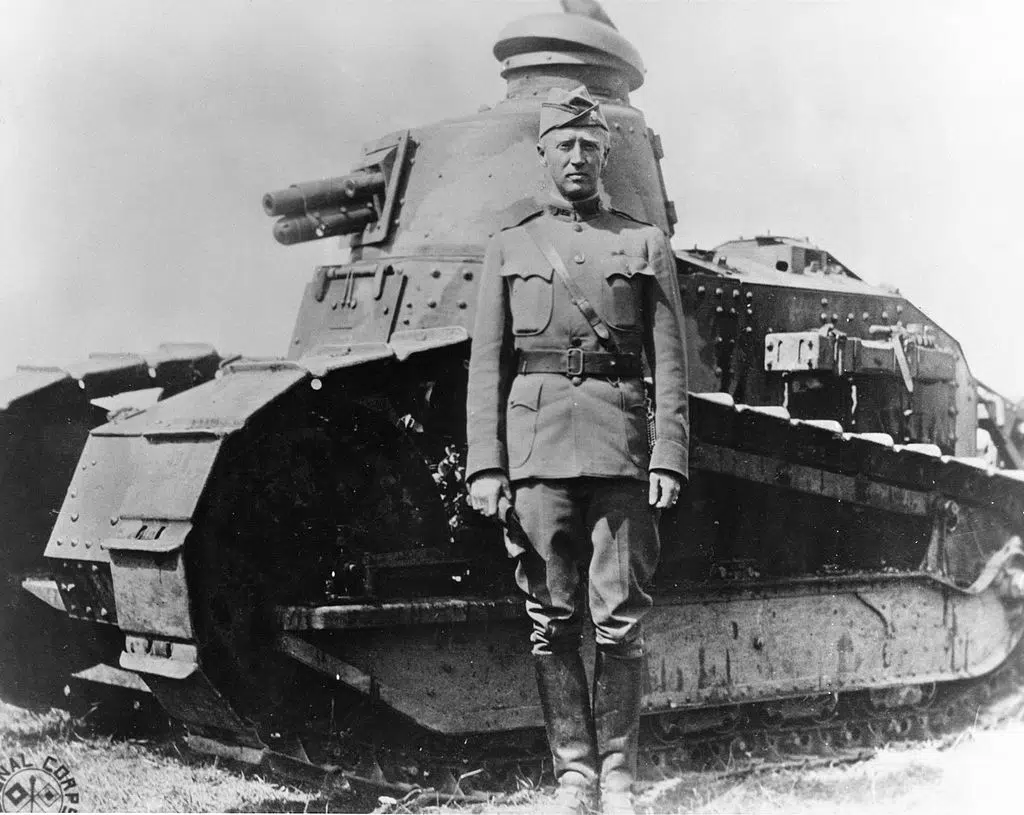Major George S. Patton, Jr, 3rd Cavalry
During lectures given to the Regular Officers at Fort Myer and Fort Humphreys during 1933, Major George S. Patton, Jr. of the 3rd Cavalry stated, “Wars may be fought with weapons, but they are won by men. It is the spirit of the men who follow and the man who leads that gains the victory.” Despite Patton’s pivotal role in shaping the U.S. Military’s use and advancement of mechanized forces, he understood that it was men who gained victory.
Patton remarked that “New weapons are useful in that they add to the repertoire of killing, but, be they tank or tomahawk, weapons are only weapons after all.”

Patton and Mechanized Forces
After participating in the Pancho Villa Expedition, the first mobilized attack in the history of U.S. Warfare, Patton was transferred in 1917 into the U.S. Army’s Tank Corps, where he was assigned to establish the American Expeditionary Force light tank school. He reported to the French Army’s tank training school where he drove a Renault FT light tank, becoming the only US soldier with tank-driving experience.
Upon establishing the tank school at Bourg, he received ten Renault FT light tanks in March 1918. In his post at Bourg, Patton trained tank crews to operate in support of infantry, and worked to promote the light tank’s acceptance among infantry officers. Throughout the remainder of the First World War, Patton led tanks and troops into combat, requiring that no tank be surrendered.
During the Interwar years, Patton was given temporary duty in Washington D.C. to serve on a committee writing a manual for tank operations. It was during this assignment where he developed the belief that tanks should be used as an independent fighting force and not just for infantry support. He was assigned multiple times during this period to Fort Myer as the commander of the 3rd Squadron, 3rd Cavalry.
While at Fort Myer, Patton spent his time writing technical papers, giving speeches about his mechanized experiences during the First World War, as well as lectures on mechanization. Patton began to push for more development of armored warfare with an emphasis on speed, mobility, and surprise, but the development of an armored corps was delayed due to a limited military budget and the already established Infantry and Cavalry branches.
Following the German invasion of Poland in September 1939, Patton sought to build up the power of the U.S. armored forces. In 1940, during maneuvers conducted by the Third Army, Patton met Adna R. Chaffee Jr. and the two began to develop recommendations on forming an armored force. Chaffee became the commander of this force and created the 1st and 2nd Armored Divisions.
Patton was eventually named Commanding General of the 2nd Armored Division. In December 1940, Patton began staging maneuvers in which he would perform aerial surveillance in order to effectively deploy vehicles in combat.
After the attack on Pearl Harbor in December 1941, Patton took over command of the 1st and 2nd Armored Divisions. He organized a training facility in the California desert where he would observe vehicle maneuverings from the air in order to effectively deploy them in combat. In 1942, Patton was assigned to North Africa where he was able to put U.S. forces back on the offensive after several defeats in the region. In 1943, he planned and conducted a successful campaign for the Invasion of Sicily with the U.S. 7th Army.
When the 1st Army broke the German line in Normandy on D-Day, Patton’s 3rd Army swept through the breach in pursuit of the Nazi forces through northern France. Patton’s force played a key role in upsetting the German counterattack in the Ardennes during the Battle of the Bulge.
In early 1945, the German forces were in full retreat. Patton and his Third Army managed to cross the Rhine and charge into the heart of Germany, capturing 10,000 square miles of territory and helped liberate Germany from Nazi control.
